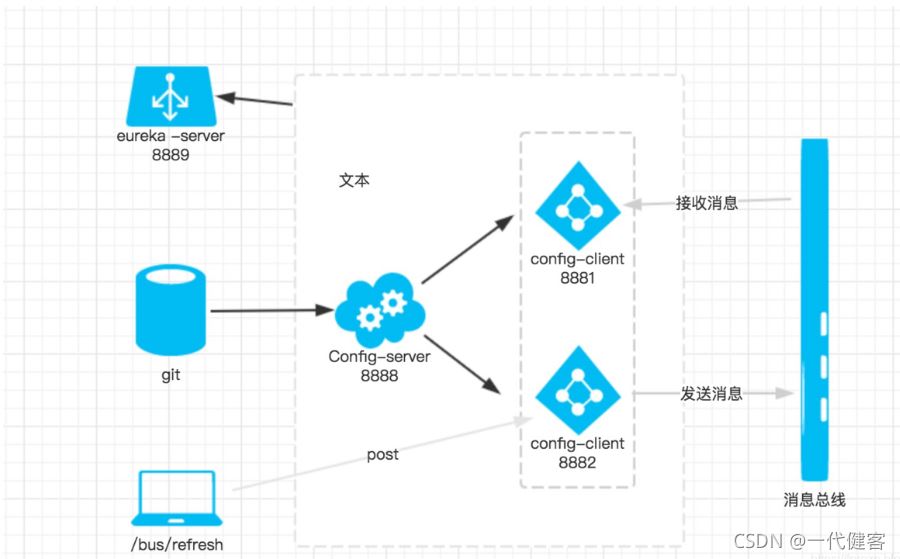概念
我们使用配置中心时,当配置中心的配置发生了变化,我们就要发送一个post请求给客户端,让它重新去拉取新的的配置。当客户端有很多时,并且还是使用同一份配置文件,这样当配置中心的配置发生改变,我们就得逐个发送post请求通知,这样无疑是很浪费人力物力的。
Bus消息总线组件就帮我们解决了这个问题。他的工作流程是这样的,当配置中心的配置发生了变化时,我们给其中一个客户端发送post请求,然后client将请求的信息发送到rabbitmq队列中,然后消息队列将消息发送给别的队列。
使用
准备工作
项目基于Spring Cloud 第七章的项目改造。
改造config-client 添加相应坐标
?
|
1 2 3 4 5 6 7 8 9 10 11 12 13 14 15 16 17 18 19 20 21 22 23 24 25 |
|
在启动类中添加@RefreshScope注解
@RefreshScope注解只需要写在需要刷新配置文件的地方,不一定非要在启动类中
?
|
1 2 3 4 5 6 7 8 9 10 11 12 13 14 15 16 17 18 19 20 21 22 23 |
|
配置相关配置
?
|
1 2 3 4 5 6 7 8 9 |
|
- 依次启动eureka-server、confg-cserver,启动两个config-client,端口为:8881、8882。
- 访问http://localhost:8881/hi 或者http://localhost:8882/hi 浏览器显示:
- 这时我们去代码仓库将foo的值改为“foo version 4”,即改变配置文件foo的值。如果是传统的做法,需要重启服务,才能达到配置文件的更新。此时,我们只需要发送post请求:http://localhost:8881/actuator/bus-refresh,你会发现config-client会重新读取配置文件
- 1.5版本的post请求http://localhost:8881/bus/refresh
- 2.0版本的post请求http://localhost:8881/actuator/bus-refresh
- 这时我们再访问http://localhost:8881/hi 或者http://localhost:8882/hi 浏览器显示:
另外,/actuator/bus-refresh接口可以指定服务,即使用"destination"参数,比如 “/actuator/bus-refresh?destination=customers:**” 即刷新服务名为customers的所有服务。 原理图

当git文件更改的时候,通过pc端用post 向端口为8882的config-client发送请求/bus/refresh/;此时8882端口会发送一个消息,由消息总线向其他服务传递,从而使整个微服务集群都达到更新配置文件。
原文链接:https://blog.csdn.net/qq_44333590/article/details/121006985
本文链接:https://my.lmcjl.com/post/8573.html

4 评论